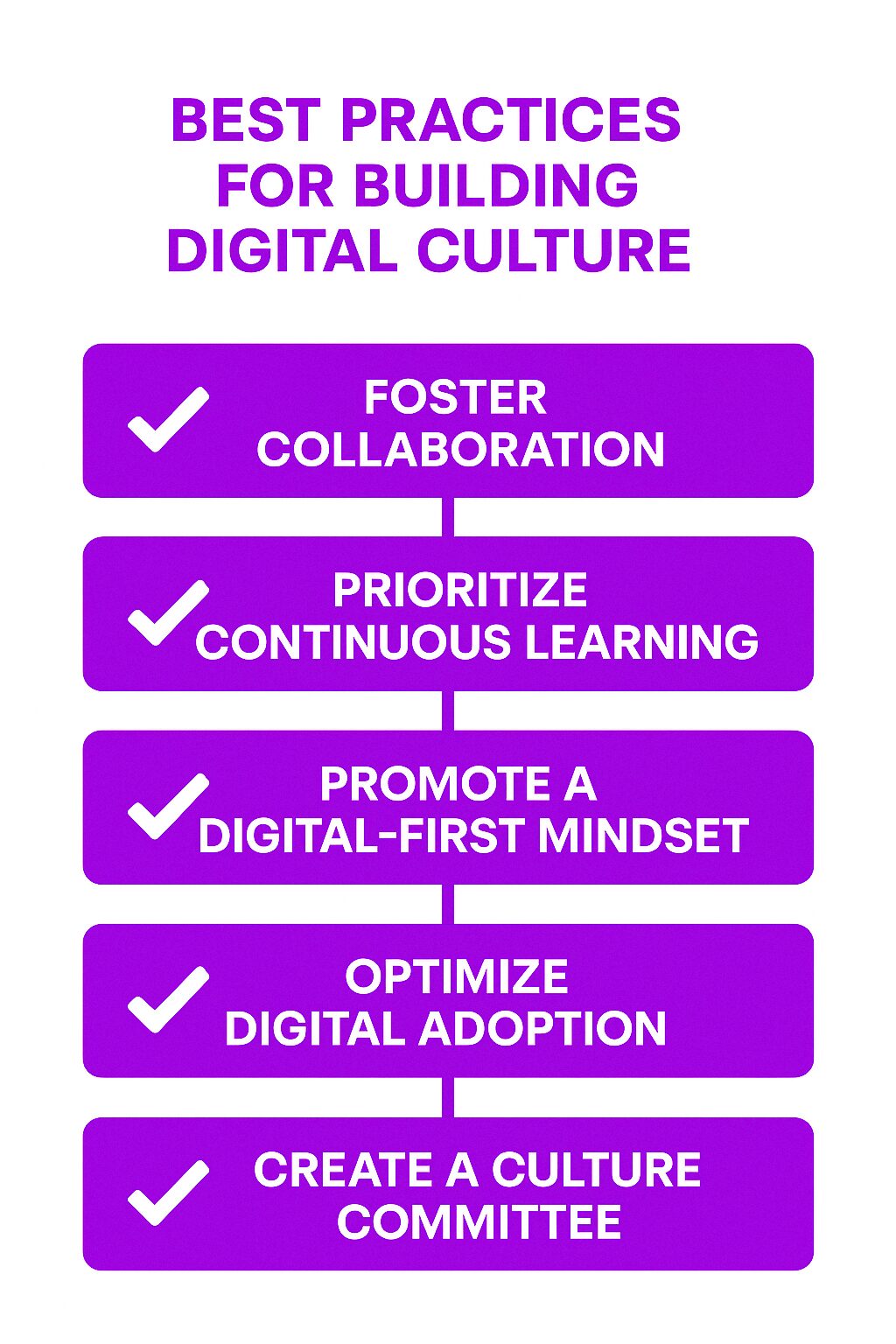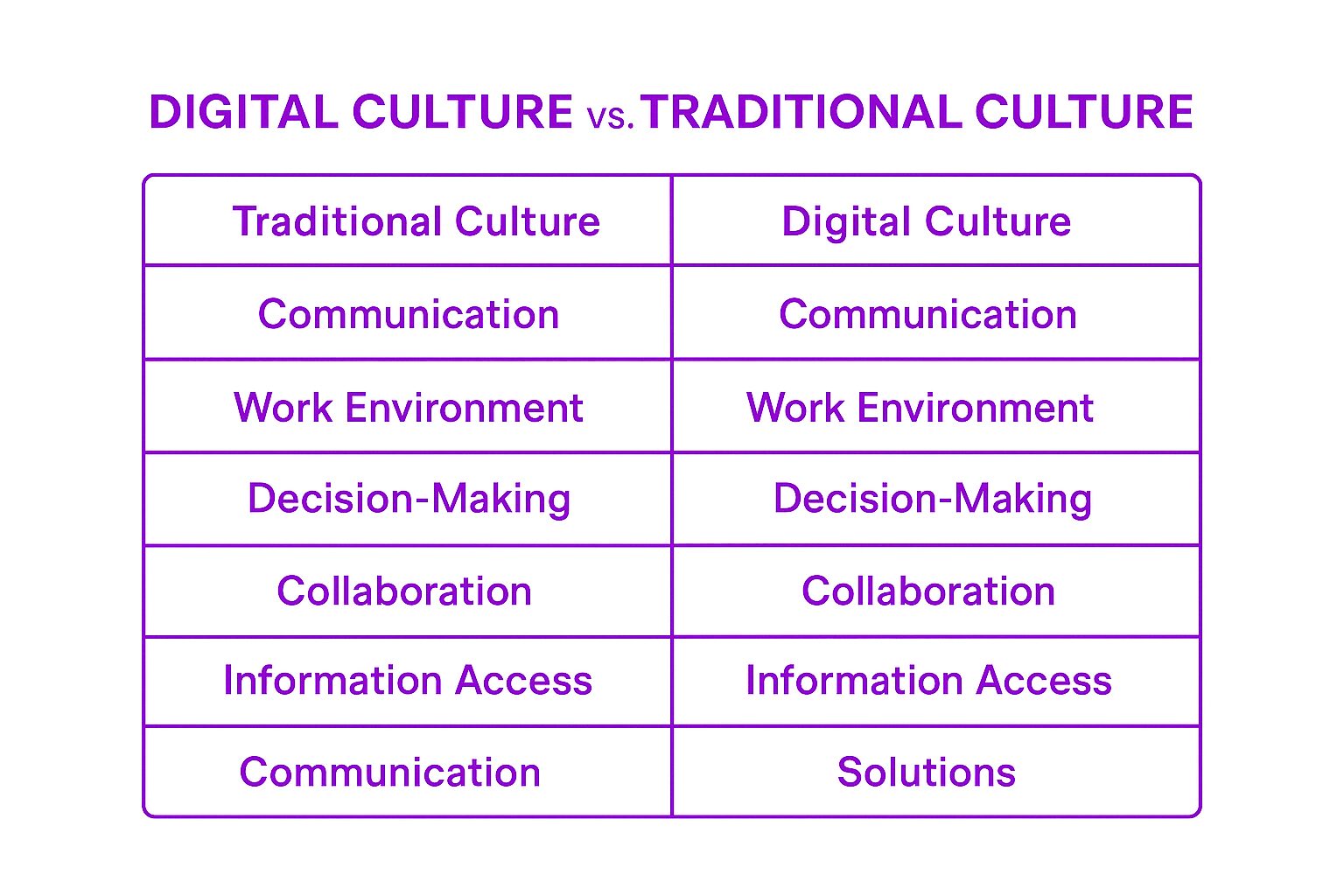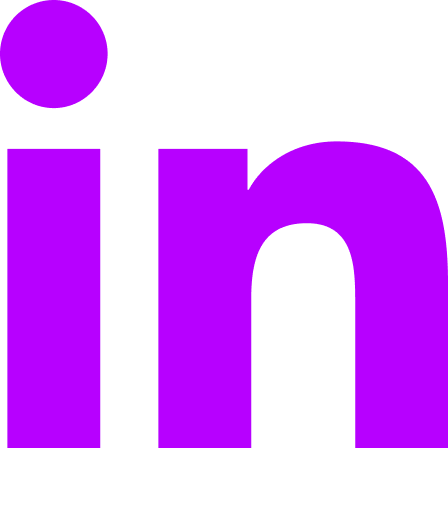What Is Digital Culture?
Digital culture refers to the set of behaviors, values, and practices shaped by technology within an organization. It defines how employees communicate, collaborate, and adapt to digital tools in their daily workflows. A strong digital culture goes beyond merely using technology—it integrates digital processes into the company’s identity, encouraging efficiency, agility, and innovation.
Companies with a strong digital culture foster an environment where technology drives decision-making, enhances collaboration, and improves employee engagement. It is a critical component of modern workplaces, influencing how organizations respond to digital transformation and market shifts.
How Digital Culture Works
Digital culture influences the way businesses operate by embedding digital tools into everyday practices. Digital technologies encompass various tools and platforms that transform communication, collaboration, and business processes within organizations, fostering an innovative and adaptable environment essential for successful digital transformation. It shapes how employees interact with software, automation, and artificial intelligence to improve productivity. Digital culture is not limited to tech companies; it impacts all industries, from healthcare to retail and finance.
A well-developed digital culture encourages employees to embrace new technologies, experiment with digital solutions, and integrate data-driven insights into their work. Organizations that successfully embed digital culture foster an environment of continuous learning and adaptability.
Key Components of Digital Culture
1. Technology Integration
Digital culture revolves around using digital technology, including tools like project management software, customer relationship management (CRM) systems, and artificial intelligence to enhance workflows. Companies invest in collaboration platforms such as Slack, Microsoft Teams, and Google Workspace to facilitate seamless communication and teamwork.
2. Digital Communication
Organizations with a strong digital culture move away from traditional communication methods such as emails and meetings, favoring digital communication tools like real-time messaging, video conferencing, and digital forums. This shift ensures that employees stay connected regardless of location.
3. Data-Driven Decision-Making
Businesses leverage analytics and artificial intelligence to make informed choices. A culture that values data enables teams to track key performance indicators (KPIs), measure outcomes, and adjust strategies based on real-time insights.
4. Continuous Learning and Digital Literacy
Employees must constantly upskill to keep pace with evolving technologies. Natural language processing (NLP) is one such emerging trend that significantly influences workplace dynamics and digital culture. Companies that prioritize digital literacy provide training in new tools, cybersecurity best practices, and emerging trends like AI and blockchain.
5. Digital-First Mindset
A digital-first organization embraces automation, artificial intelligence, and cloud computing to optimize processes. A supportive digital culture is crucial for successful digital transformation, fostering mindsets and behaviors that embrace technological integration. It encourages employees to explore technology-driven solutions and rethink traditional ways of working.
The Evolution of Digital Culture
Initially, digital culture centered around IT departments managing company networks and software. Over time, businesses expanded their digital strategies, integrating technology into all aspects of operations. Cloud computing, remote work, and automation accelerated the need for a digital-first approach.
This shift towards digital transformation not only reshapes business models but also has a profound effect on the underlying corporate culture.
Today, digital culture includes hybrid work models, AI-driven decision-making, and customer experience platforms. Companies that adapt quickly gain a competitive advantage, while those that resist struggle with inefficiencies and stagnation.
Why Digital Culture Matters
A company’s digital culture determines how well it navigates technological advancements. Business leaders must grasp how digital tools and interactions can enhance customer engagement and operational processes, particularly during transitions like remote work. Businesses that embrace digital culture experience:
-
Greater Efficiency: Automation and AI reduce manual work, streamlining operations.
-
Improved Collaboration: Digital tools enable seamless teamwork, regardless of location.
-
Increased Agility: Organizations can pivot quickly in response to market changes.
-
Higher Employee Engagement: Digital tools keep employees connected and engaged in company goals.
Benefits of Digital Culture
1. Encourages Innovation
A digital-first mindset fosters a culture where employees are encouraged to experiment with new tools and processes. Organizations that prioritize digital culture often lead in product innovation and process improvement.
2. Enhances Agility
Companies with strong digital cultures adapt quickly to industry trends and consumer demands. Businesses that use AI, cloud computing, and automation can scale faster and respond to disruptions more effectively.
3. Boosts Employee Engagement
Digital culture creates an environment where employees feel more connected and enhance communication. Real-time messaging, video conferencing, and virtual collaboration platforms make teamwork easier and more engaging.
4. Improves Decision-Making
Data-driven organizations use real-time analytics to guide strategies. A strong digital culture ensures that employees understand and utilize data in daily decision-making.
5. Strengthens Customer Relationships
Companies that leverage digital tools can offer personalized experiences, improving customer satisfaction and loyalty.
Challenges of Digital Culture
1. Resistance to Change
Employees may hesitate to adopt new technologies, fearing disruptions in their workflows. Organizations must provide training and demonstrate the benefits of digital tools to encourage adoption.
2. Digital Overload
Too many tools and platforms can overwhelm employees, leading to tool fatigue. Companies should streamline their digital ecosystems to avoid inefficiencies.
3. Security and Privacy Concerns
As businesses become more digital, cybersecurity threats increase. Companies must implement robust security measures and educate employees on best practices.
4. Skill Gaps
Many employees struggle to keep up with rapid technological advancements. Businesses should invest in ongoing training to ensure a digitally literate workforce.
5. Lack of Leadership Buy-In
If executives do not champion digital initiatives, adoption rates drop. Effective communication is a fundamental component of a successful digital culture, emphasizing how platforms like Simpplr can improve internal communication and ensure employees remain aligned and informed. Digital culture must be driven from the top down to be successful.
Best Practices for Building a Strong Digital Culture
1. Foster Collaboration and Communication
-
Use collaboration tools like Slack, Microsoft Teams, and Asana to streamline communication.
-
Encourage knowledge-sharing through internal digital communities.
2. Prioritize Continuous Learning
-
Offer digital literacy training and upskilling programs.
-
Provide resources for employees to learn about emerging technologies.
3. Promote a Digital-First Mindset
-
Encourage employees to seek out technology-driven solutions to everyday challenges.
-
Recognize and reward teams that successfully implement digital initiatives.
4. Measure and Optimize Digital Adoption
-
Track digital tool usage and employee engagement.
-
Gather feedback and refine digital strategies based on employee input.
Digital Culture vs. Traditional Culture
|
Aspect |
Traditional Culture |
Digital Culture |
|---|---|---|
|
Communication |
Email, in-person meetings |
Instant messaging, video calls |
|
Work Environment |
Fixed office spaces |
Hybrid and remote work options |
|
Decision-Making |
Gut instinct, experience |
Data-driven, analytics-based |
|
Collaboration |
Departmental silos |
Real-time, cross-functional teamwork |
|
Information Access |
Paper-based, static resources |
Cloud storage, real-time updates |
Real-World Examples of Digital Culture
1. Agero’s Digital Workplace Transformation
Agero used an intranet platform to boost employee engagement by 22 times, demonstrating the power of digital culture in improving workplace connectivity.
2. Malwarebytes’ Remote Work Success
By leveraging digital tools, Malwarebytes maintained 24/7 connectivity for employees, ensuring seamless collaboration across time zones.
3. Amazon’s AI-Powered Operations
Amazon integrates digital culture into logistics and customer service, using AI to optimize supply chains and personalize recommendations. Additionally, integrating advanced technologies such as virtual reality is shaping organizational values and behaviors, enhancing communication, collaboration, and innovation.
Why Digital Culture Is Essential for Digital Transformation
A company’s ability to adapt to digital transformation depends on its digital culture. Businesses with strong digital cultures:
-
Are 1.6 times more likely to succeed in digital transformation initiatives.
-
Report higher employee satisfaction and retention rates.
-
Offer superior customer experiences through seamless digital interactions.
Organizations that resist digital culture risk falling behind, facing inefficiencies, and losing competitive advantage.
Final Thoughts
Digital culture is a critical factor in business success. Companies that embed digital values into their workflows, invest in employee training, and encourage a digital-first mindset will thrive in an increasingly technology-driven world. Businesses that prioritize digital culture are more agile, innovative, and prepared for the future of work.







